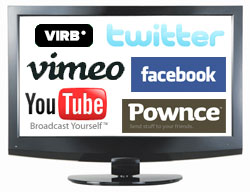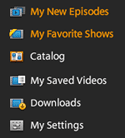 “PC-to-TV”-type devices, often referred to as media extenders, have been around for a number of years, and yet have failed to reach anything like mass adoption. The reason, argues Tim Lee over at TechDirt, is that unlike the “open” MP3 format, which in the early 90s acted as the catylst for a burgeoning digital audio player market, there hasn’t been an equivalent standard for streaming content from a PC to the television.
“PC-to-TV”-type devices, often referred to as media extenders, have been around for a number of years, and yet have failed to reach anything like mass adoption. The reason, argues Tim Lee over at TechDirt, is that unlike the “open” MP3 format, which in the early 90s acted as the catylst for a burgeoning digital audio player market, there hasn’t been an equivalent standard for streaming content from a PC to the television.
I think the big difference is that the lack of DRM on CDs allowed the industry to standardize on the open MP3 format, despite the music industry’s best efforts to shut down the makers of the first MP3 players. Once the courts confirmed that CD ripping was legal, it created a thriving ecosystem of software and hardware around the MP3 format, and it made it easier for startup firms like iRiver to jump into the market quickly and produce innovative new products. On the other hand, because DVDs are encumbered with DRM, firms wanting to make digital video devices have to kowtow to Hollywood to get permission to make devices that can play their content—even if the user has already paid for it. Getting Hollywood’s permission requires the sort of endless negotiation and bureaucracy that is fatal to a high-tech startup.
Lee then gives the example of the original XBox “games console”, which has been hacked beyond all recognition to bypass the limits Microsoft placed on the device’s original media extender capabilities, so that it supports almost any video and audio format.
While I don’t quite follow Lee’s first example, since lots of software exists for ripping a DVD to a user’s computer (although such functionality is notably missing from iTunes), it’s certainly true that DRM and the need to pander to Hollywood has held back the adoption of video downloads, and therefore media extenders. And, perhaps as a result, too many hardware offerings are “closed” in the sense that users are stuck with the audio and video formats, and Internet services, which are supported “right out of the box”.
Continue reading »



 Azureus announced today that it has opened up its online video distribution platform,
Azureus announced today that it has opened up its online video distribution platform,  It’s October, and you know what that means. No, not the World Series.
It’s October, and you know what that means. No, not the World Series.  “PC-to-TV”-type devices, often referred to as media extenders, have been around for a number of years, and yet have failed to reach anything like mass adoption. The reason, argues Tim Lee
“PC-to-TV”-type devices, often referred to as media extenders, have been around for a number of years, and yet have failed to reach anything like mass adoption. The reason, argues Tim Lee  Guess what television? You may not love the internet, but the internet loves you. Stop sending us takedown notices!
Guess what television? You may not love the internet, but the internet loves you. Stop sending us takedown notices! Thank you, TV Guide. Finding television video clips on the Internet just got a whole lot easier.
Thank you, TV Guide. Finding television video clips on the Internet just got a whole lot easier. Earlier this week Adobe made available for download a
Earlier this week Adobe made available for download a  The Adobe Media Player combines a channel guide, streaming video player and video podcast client into a single desktop application, which, since it’s built on top of the AIR platform, runs on both a Mac or PC.
The Adobe Media Player combines a channel guide, streaming video player and video podcast client into a single desktop application, which, since it’s built on top of the AIR platform, runs on both a Mac or PC.